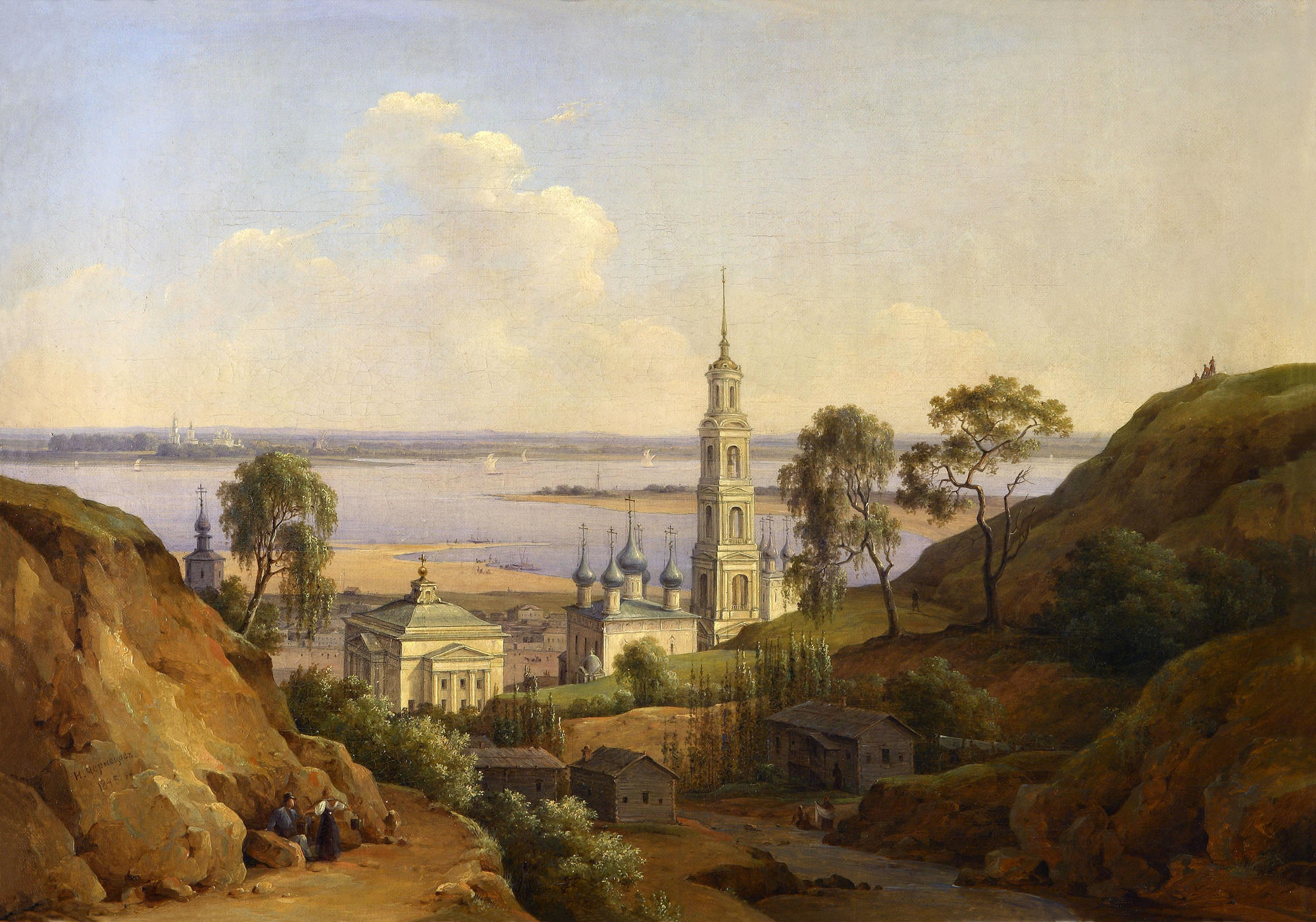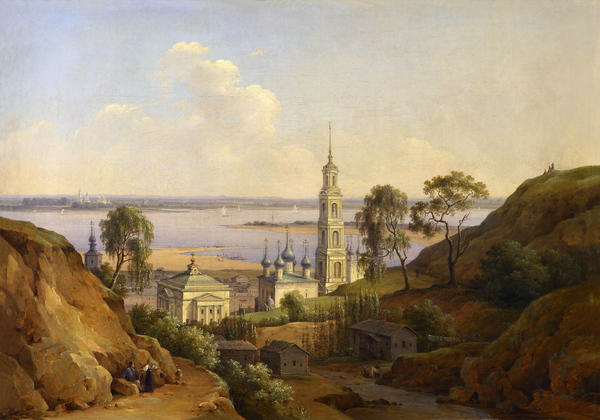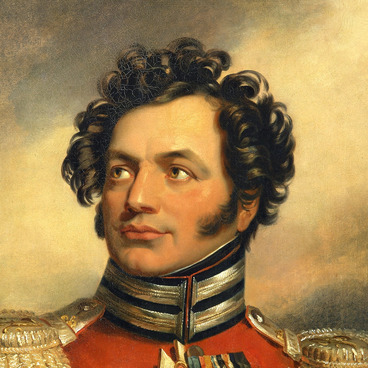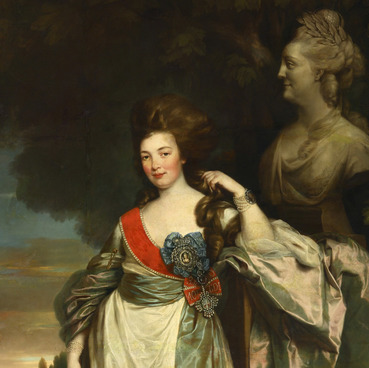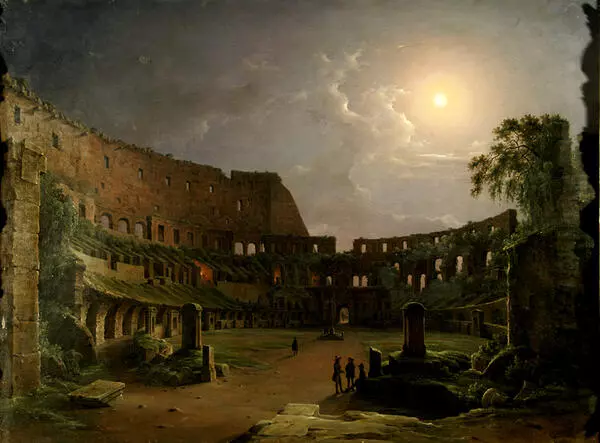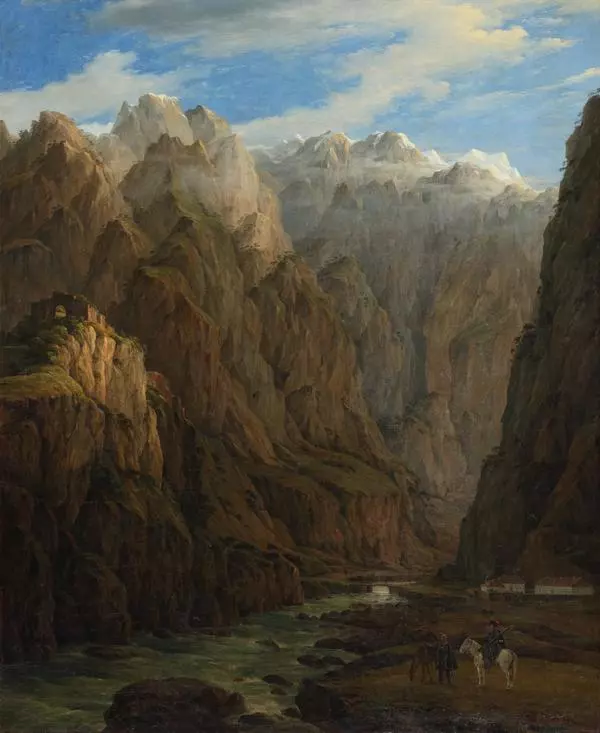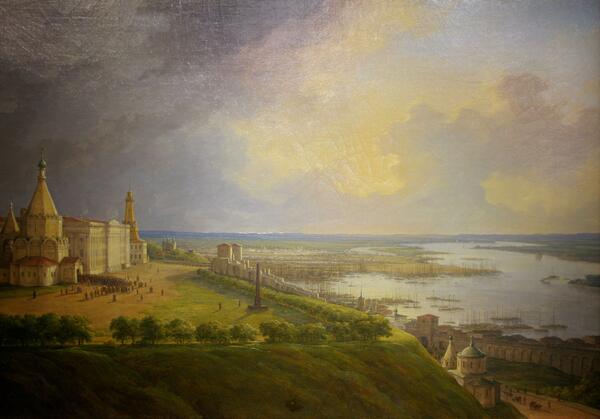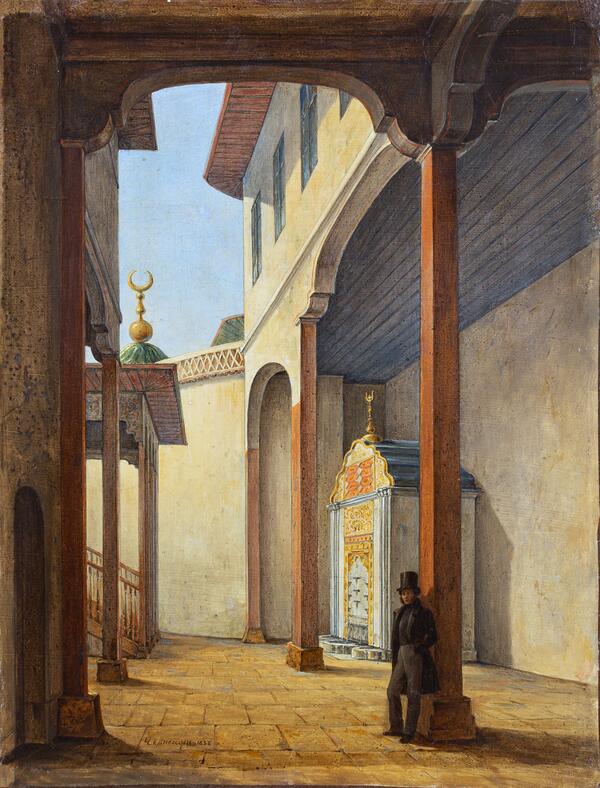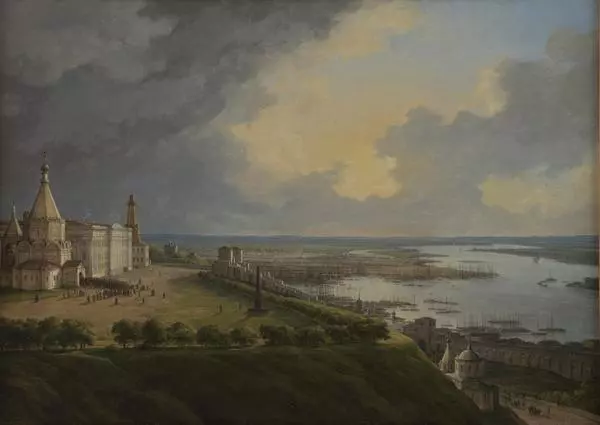Nikanor Chernetsov was born in Kostroma Province in a family of an icon writer in 1805. He studied at the Academy of Arts with his older brother. The mentors of the Chernetsov brothers were a master of engraving and lithography Galactionov and a landscape painter Vorobyev. In 1828 Nikanor Chernetsov finished the full course of the Academy and received a gold medal.
In 1832 the artist received the title of academician. For the next 3 years, invited by the governor general of the Novorossiysk Region, Earl Vorontsov Chernetsov lived and worked in Crimea.
In 1838, Nikanor Chernetsov got a permission of the Academy and went on a trip through the Volga river on a specially converted ship together with his brothers and disciple. The aim of the trip was ‘paint wonderful places on both banks of the Volga river from life in panoramic form.’ During the six-month journey, the painters made 1982 drawings, 80 sketches of oil and many plans and sketches of attractions.
On a small canvas ‘Yurevets-Povolski’ the city and its surroundings are painted on a sunny summer day. The landscape is painted according to all canons of classicism. By the academic rules, the landscape was to have a three-plan composition balanced on both sides by ‘scenes’ - usually trees.
More generically, Chernetsov painted the outline of the town square which can be seen between the buildings. Behind the square there is a view of the Volga river with sailing boats floating on the water. Light translucent brush strokes form the contour of left river bank with forests and outline of the buildings of Krivoezersky Monastery. Small figures of peasants brighten up the landscape. Following the rules of classicism, Chernetsov creates the landscape in which there is no thoughtlessness, everything is calculated and polished to perfection.
In 1832 the artist received the title of academician. For the next 3 years, invited by the governor general of the Novorossiysk Region, Earl Vorontsov Chernetsov lived and worked in Crimea.
In 1838, Nikanor Chernetsov got a permission of the Academy and went on a trip through the Volga river on a specially converted ship together with his brothers and disciple. The aim of the trip was ‘paint wonderful places on both banks of the Volga river from life in panoramic form.’ During the six-month journey, the painters made 1982 drawings, 80 sketches of oil and many plans and sketches of attractions.
On a small canvas ‘Yurevets-Povolski’ the city and its surroundings are painted on a sunny summer day. The landscape is painted according to all canons of classicism. By the academic rules, the landscape was to have a three-plan composition balanced on both sides by ‘scenes’ - usually trees.
The painter divides the space into canvas-parallel plans. In the foreground, there are log houses, highlighted by the scenes of slightly shaded clay hills, on both side of the shallow river. The second plan is well lit. It is a lowland on which the center of attention of the artist is two churches with the bell tower forming group of the Vkhodo-Iyerusalimsky temple. In the classical landscape, the presence of majestic structures or ruins is mandatory.
More generically, Chernetsov painted the outline of the town square which can be seen between the buildings. Behind the square there is a view of the Volga river with sailing boats floating on the water. Light translucent brush strokes form the contour of left river bank with forests and outline of the buildings of Krivoezersky Monastery. Small figures of peasants brighten up the landscape. Following the rules of classicism, Chernetsov creates the landscape in which there is no thoughtlessness, everything is calculated and polished to perfection.
